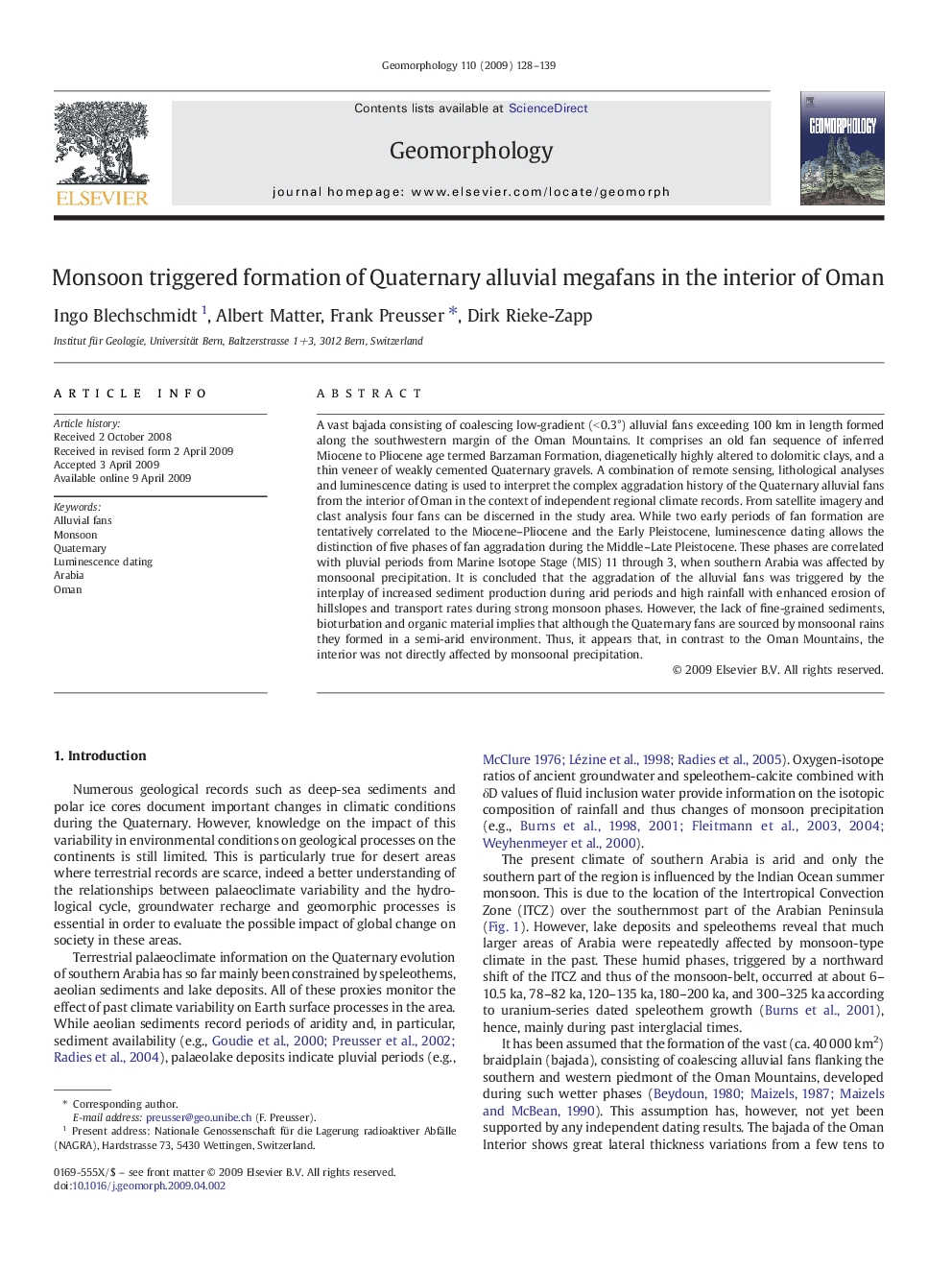| کد مقاله | کد نشریه | سال انتشار | مقاله انگلیسی | نسخه تمام متن |
|---|---|---|---|---|
| 4686128 | 1635537 | 2009 | 12 صفحه PDF | دانلود رایگان |

A vast bajada consisting of coalescing low-gradient (< 0.3°) alluvial fans exceeding 100 km in length formed along the southwestern margin of the Oman Mountains. It comprises an old fan sequence of inferred Miocene to Pliocene age termed Barzaman Formation, diagenetically highly altered to dolomitic clays, and a thin veneer of weakly cemented Quaternary gravels. A combination of remote sensing, lithological analyses and luminescence dating is used to interpret the complex aggradation history of the Quaternary alluvial fans from the interior of Oman in the context of independent regional climate records. From satellite imagery and clast analysis four fans can be discerned in the study area. While two early periods of fan formation are tentatively correlated to the Miocene–Pliocene and the Early Pleistocene, luminescence dating allows the distinction of five phases of fan aggradation during the Middle–Late Pleistocene. These phases are correlated with pluvial periods from Marine Isotope Stage (MIS) 11 through 3, when southern Arabia was affected by monsoonal precipitation. It is concluded that the aggradation of the alluvial fans was triggered by the interplay of increased sediment production during arid periods and high rainfall with enhanced erosion of hillslopes and transport rates during strong monsoon phases. However, the lack of fine-grained sediments, bioturbation and organic material implies that although the Quaternary fans are sourced by monsoonal rains they formed in a semi-arid environment. Thus, it appears that, in contrast to the Oman Mountains, the interior was not directly affected by monsoonal precipitation.
Journal: Geomorphology - Volume 110, Issues 3–4, 15 September 2009, Pages 128–139